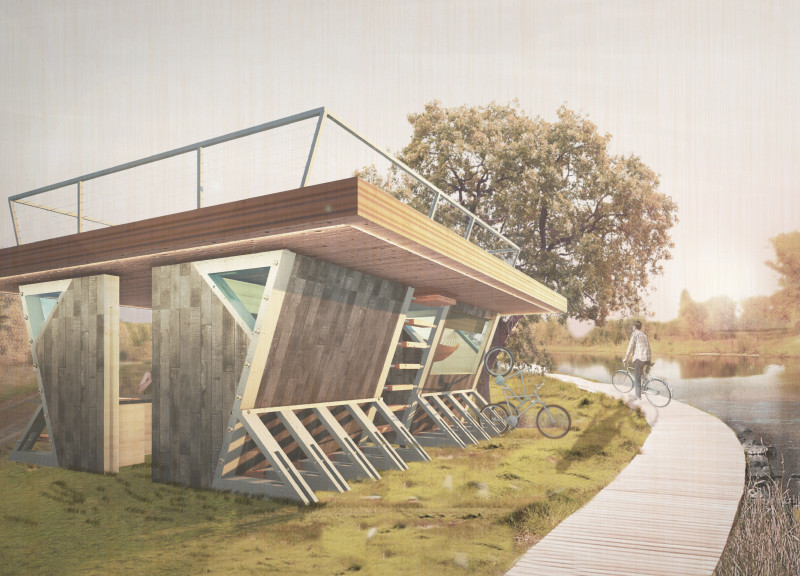5 key facts about this project
The architectural design along the European Velo Route 6 connects urban and rural landscapes while providing important amenities for bicycle tourists. The project enhances the relationship between riders and their environment through flexible and recognizable Velo stops. The design concept emphasizes modularity, allowing the structures to adapt to different site conditions and user needs while maintaining a unified visual style.
Modular Design
The design features custom triangular columns that draw inspiration from the shape of a bicycle frame. These columns offer support and guide various configurations for shelters. Their triangular shape provides both stability and visual harmony across the project. These columns act as the foundation for additional modular elements, allowing for flexible setups that can adapt to various functions.
User-Centric Amenities
The design allows for multiple arrangements that respond to specific site features. Basic setups include vertical bike racks made from the columns, but combinations can add horizontal bike racks, picnic tables, or hammocks. This thoughtful integration encourages cyclists to engage with each other and enjoy social interactions in a natural setting, enhancing their overall experience along the route.
Sustainability Features
Sustainability is a key focus, especially in the deluxe cabins, which are equipped for rainwater collection and solar power use. These features address the ecological impact of the structures and support the needs of bicycle tourists, ensuring their journey is both enjoyable and environmentally friendly. The emphasis on sustainable practices reflects a commitment to responsible design.
Construction Methods
The construction approach involves prefabricating components off-site, making transport efficient through methods like helicopter or bicycle trailer. This strategy reduces environmental impact by minimizing the use of heavy machinery during assembly. When brought to the site, the components are assembled using hand tools, emphasizing attention to detail and craftsmanship in each structure.
The project incorporates practical design elements such as sleeping modules with secure storage and well-equipped kitchens featuring sinks and propane stoves. These aspects improve the usability of the shelters and cater to a variety of needs, creating spaces that invite cyclists to rest and recharge while promoting community interaction.



























